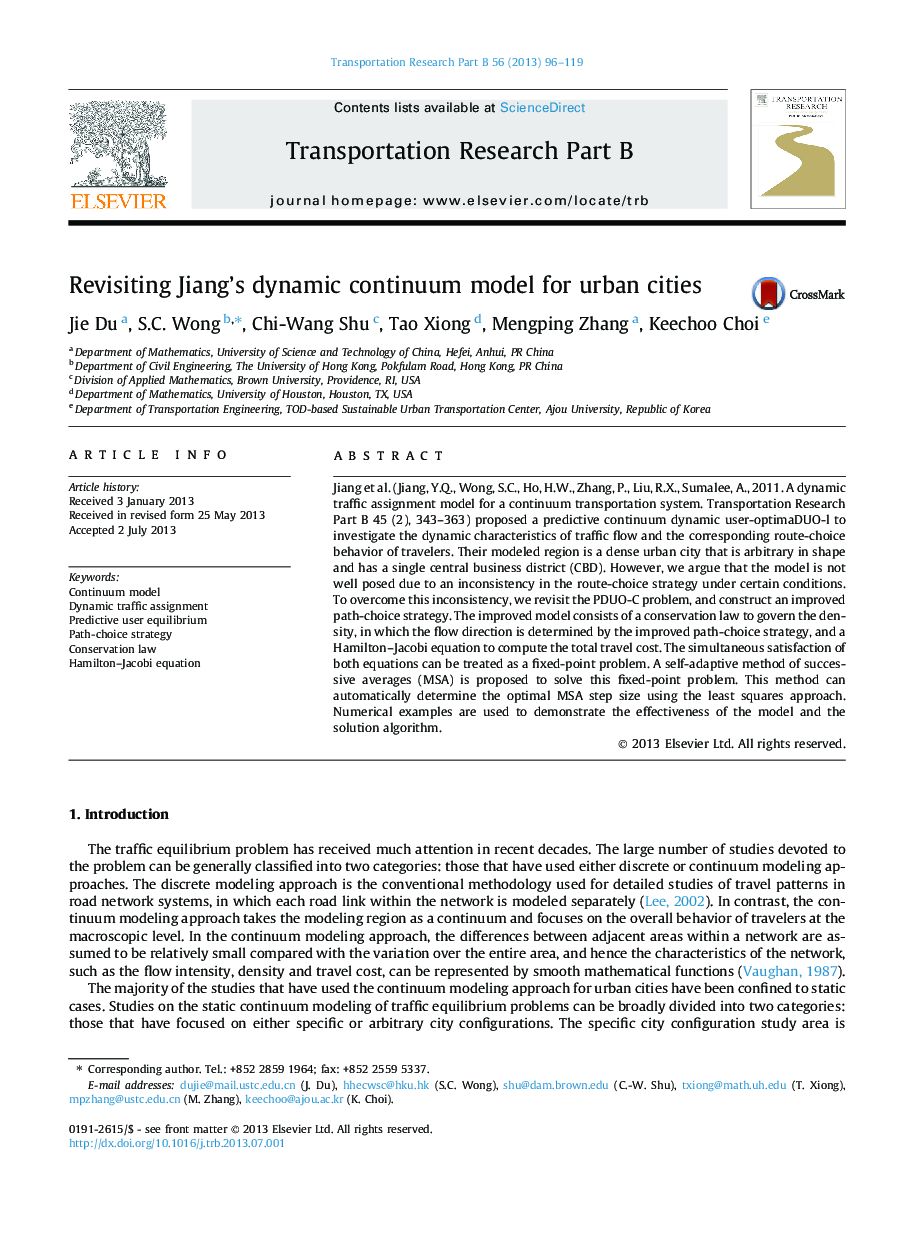| Article ID | Journal | Published Year | Pages | File Type |
|---|---|---|---|---|
| 1132149 | Transportation Research Part B: Methodological | 2013 | 24 Pages |
•We show that the original PDUO-C model is not well posed due to an inconsistency in the path-choice strategy under certain conditions.•We revisit the PDUO-C problem, and construct an improved model that rectifies the inconsistency in the original model.•We propose a self-adaptive MSA that can automatically determine the optimal MSA step size using the least squares method without prior information.
Jiang et al. (Jiang, Y.Q., Wong, S.C., Ho, H.W., Zhang, P., Liu, R.X., Sumalee, A., 2011. A dynamic traffic assignment model for a continuum transportation system. Transportation Research Part B 45 (2), 343–363) proposed a predictive continuum dynamic user-optimaDUO-l to investigate the dynamic characteristics of traffic flow and the corresponding route-choice behavior of travelers. Their modeled region is a dense urban city that is arbitrary in shape and has a single central business district (CBD). However, we argue that the model is not well posed due to an inconsistency in the route-choice strategy under certain conditions. To overcome this inconsistency, we revisit the PDUO-C problem, and construct an improved path-choice strategy. The improved model consists of a conservation law to govern the density, in which the flow direction is determined by the improved path-choice strategy, and a Hamilton–Jacobi equation to compute the total travel cost. The simultaneous satisfaction of both equations can be treated as a fixed-point problem. A self-adaptive method of successive averages (MSA) is proposed to solve this fixed-point problem. This method can automatically determine the optimal MSA step size using the least squares approach. Numerical examples are used to demonstrate the effectiveness of the model and the solution algorithm.
